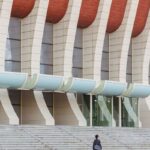Addressing Barriers to Aboriginal Education in Australia
The Good News
DOWNINGTON, Pennsylvania — Many modern Aboriginals and Torres Strait Islanders (an Indigenous people of Australia) are struggling to access basic education. Four major barriers to education that Aboriginal and Indigenous students face are geographic isolation, discrimination, lack of cultural recognition, and costs.
Geographic Isolation
While the Indigenous peoples of Australia inhabit both urban and rural areas, Aboriginal and Torres Strait Islanders typically compose higher proportions of the population in remote regions. Remoteness makes it more difficult to access education, requiring many Aboriginal and Indigenous students to travel long distances to attend school or board for secondary education.
Dr. Marnie O’Bryan and Dr. William Fogarty of the Australian National University’s Centre for Aboriginal Economic Policy Research (CAEPR) conducted a study to better understand the educational impacts of remoteness. They followed a community in the Northern Territory over the course of ten years. One finding was that moving away from home for secondary education was the only option for many. Unfortunately, boarding is not feasible for all. Therefore, many students who lack access to schools in remote regions simply drop out.
Discrimination
Compounding the problem, racism toward Indigenous students has left many feeling unwelcome by their non-Indigenous peers, leading them to avoid school altogether. Two female students at Broome Senior High School recently shared their accounts of “being barked at by a group of non-Indigenous boys” with an ABC Kimberley reporter. “First, I’d feel angry and once I’d calmed down I would…basically get depressed and think that school’s not worth it anymore,” one of the girls stated.
Lack of Cultural Recognition
Despite their underrepresentation in the current secondary education system, Aboriginals’ and Torres Strait Islanders’ presence in Australia dates back over 65,000 years. However, history textbooks published in the 1950s and ’60s predominantly taught that white colonizers discovered and developed Australia from nothing. Indigenous people’s presence in and contributions to the nation were largely left out. Multiculturalism replaced the “White Australia Policy” in the 1970s. Yet, even as textbooks began to acknowledge the long-standing presence of Aboriginal and Indigenous peoples in the region, the narrative persisted that white colonizers were the natives of Australia.
Costs
Meanwhile, the Australian Government estimated that more than 120,000 Indigenous people were living in poverty as of the early 2000s. Unable to afford school fees and clothing, supply and transportation costs, many Indigenous young people from struggling families have thus been deprived of education as a function of necessity rather than choice. Exacerbating the education gap between Indigenous and non-Indigenous communities, remoteness also increases tuition and transportation costs, trapping many Indigenous adolescents and families in a cycle of disadvantage. A report published by the Australian Parliament summarized the problem: “Educational disadvantage for Indigenous students begins before schooling starts,” with “extreme poverty” heightening the barriers that they face “in overcoming disadvantage.”
Addressing the Barriers
These factors have compounded to prevent many Indigenous people in Australia from accessing the education that they need to build a better life. As recently as 2021, just 68% of Australia‘s 20- to 24-year-old Indigenous population had completed a basic 12-year education or its equivalent, compared to 91% of the non-Indigenous population.
The Australian Government has recognized that closing this gap is vital to the country’s social and economic health and has ramped up its efforts to address the barriers to Aboriginal and Indigenous education. In 2018, the government introduced the Aboriginal Education Strategy (AES) to work toward creating more inclusive educational environments for Indigenous students. With a focus on South Australia, where 2.4% of the population identified as Aboriginal or Torres Strait Islander in 2021, the AES has three main goals: to increase students’ engagement with Aboriginal languages; to create culturally-responsive learning environments; and to develop individually-tailored learning plans for Aboriginal students.
To support the AES, the South Australian Department for Education has since introduced the Aboriginal Learner Achievement Leaders’ resources (ALALR) to help leaders and teachers support Aboriginal students’ learning. It is also implementing the Culturally Responsive Framework, which prioritizes making schools more inclusive for Aboriginal students and employees.
More recently, the government has introduced the Good to Great Schools Australia (GGSA) program to improve teaching skills and student outcomes in schools with high rates of Indigenous enrollment. Simultaneously, the Kimberley Schools Project (KSP) aims to improve teaching, attendance, and student success across the region, where Aboriginal learners comprise upward of 60% of the student population.
Even as government and social awareness of the problem have grown in recent decades, much work remains. An important next step will be to increase scholarship funding and financial support for struggling Aboriginal and Indigenous students and families.

<< photo by Daniel Seßler >>
The image is for illustrative purposes only and does not depict the actual situation.
You might want to read !
- “Taming the Lions: Redmayne’s Heroic Penalty Saves Propel Australia to the Cup”
- “Another Epic Victory for the Socceroos: Sydney Triumphs in Marathon Match”
- The Rise of Fußball Powerhouses: Harry Kane Joins Bayern Munich in Mega $126 Million Deal
- “Sorry Harry”: Kane’s Debut Shattered by Crushing Defeat Hours after Record-Breaking Transfer Deal
- “Harry’s Harrowing Debut: A Crushing Defeat Following Multi-Million Dollar Transfer”
- Breaking Down the Thrilling Showdown: Burnley vs Man City Score, Highlights, and Result as Erling Haaland and Co. Reign Supreme
- “Vicente Luque Dominates Rafael dos Anjos to Prove He’s Back in Top Form”
- Vicente Luque Makes Triumphant Comeback, Defeats Rafael dos Anjos in UFC Showdown




